The cat-shaped table is more than just furniture; it’s a quirky blend of art and function. Originating in the mid-20th century, this playful design reflects the rising popularity of whimsical home decor. Cat lovers and design enthusiasts alike have embraced this unique piece, making it a staple in modern homes.
These tables come in various styles and materials, from sleek wood to colorful resin. They serve as conversation starters, adding charm to any space. Whether you’re sipping coffee or displaying your favorite cat-themed decor, a cat-shaped table brings joy and personality to your home. Explore how this delightful piece can transform your living area into a fun and inviting environment.
Creative Cat-Shaped Table Designs
Artistic Interpretations
Cat-shaped tables come in many artistic forms. Designers create beautiful tables that serve both function and style. Some tables mimic the sleek lines of a cat, while others feature playful elements like tails or paws. These designs appeal to cat lovers and those who appreciate unique furniture.
One popular interpretation is the minimalist cat table. This design focuses on clean lines and simple shapes. A small table with a cat silhouette can fit into any room. It serves as a conversation starter while maintaining elegance.
Innovative Functionality
Innovative designs blend whimsy with practicality. Many cat-shaped tables include storage options. For example, some have hidden compartments for toys or books. Others might incorporate a scratching post within the table legs. This combination makes them not only pretty but also functional.
Spacious catio designs often feature these tables. They allow cats to lounge comfortably while owners enjoy their company. The integration of these elements creates an inviting space for both pets and people.

Unique Designer Examples
Different designers showcase their unique approaches to cat-shaped tables. One designer, for instance, created a gorgeous tablescape that incorporates a cat-themed centerpiece. This setting highlights how a gorgeous table can elevate any dining experience.
Another designer specializes in DIY catio plans that include multifunctional furniture. Their designs often feature a sweet table that doubles as a play area for cats. This approach encourages creativity and interaction between pets and their owners.
Practical Considerations
When choosing a cat-shaped table, consider size and placement. A small table can fit nicely in tight spaces, while larger ones may dominate a room. Think about how the table will be used daily to ensure it meets your needs.
Materials also play a role in functionality. Tables made from durable materials withstand wear and tear from playful pets. Look for options that are easy to clean, especially if they will be near food or drink.
Unique Shapes and Styles
Distinct Shapes
Cat-shaped tables come in distinct designs. Some resemble a cat sitting, while others mimic a cat lying down. Playful poses also inspire unique styles. These shapes add character to any space.
Sitting cat tables often have a wide base. This provides stability and can support various items. Lying down designs feature a longer, flatter surface. It suits those who want more tabletop area. Playful poses are often smaller and ideal for accent pieces.
Influential Styles
Different styles influence the overall look of cat-shaped tables. Modern designs focus on clean lines and minimalism. They often use materials like ash hardwood for a sleek finish. Rustic styles embrace natural grain patterns and textures. These tables may feature a thick edge or visible knots, enhancing their charm.
Minimalist designs keep things simple. They highlight the shape without extra details. This approach allows the table to fit seamlessly into various interiors. Each style offers a customized look that matches personal preferences.
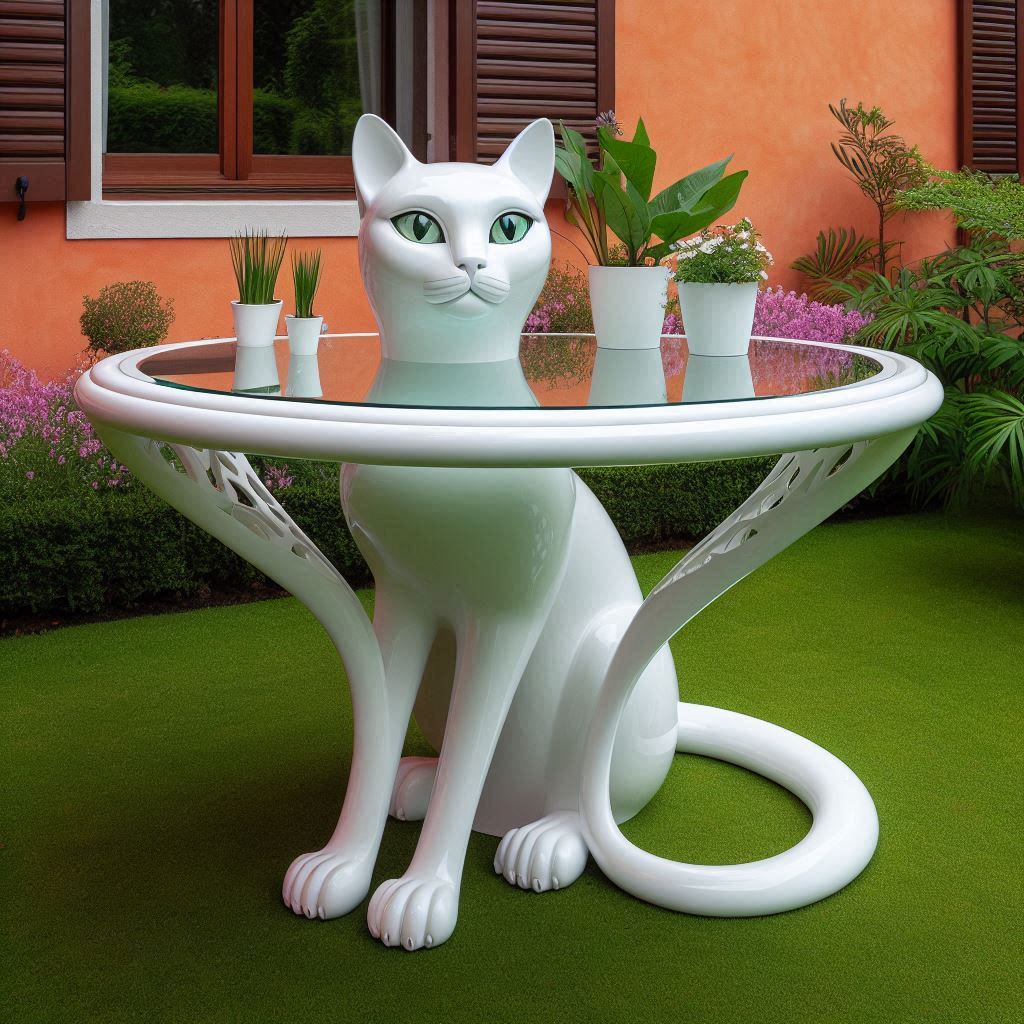
Complementing Interiors
Cat-shaped tables can complement many interior themes. A rustic table fits well in cozy, farmhouse-style homes. Its natural wood grain adds warmth to the space. In contrast, modern tables suit contemporary settings. Their sleek appearance enhances clean and uncluttered environments.
Playful designs work well in children’s rooms. They bring fun and creativity into the space. For adults, these quirky pieces can serve as conversation starters in living rooms or offices.
Technical Details
When considering dimensions, the width and height matter significantly. Tables typically range from 24 to 36 inches in width. The height usually falls between 18 to 30 inches, depending on the design.
Legs are another important feature. Some tables have sturdy legs made from solid wood, while others use metal for an industrial touch. Pocket holes may be used for assembly, ensuring durability.
Prices vary based on materials and craftsmanship. Custom-made tables tend to cost more than those from big box stores. Understanding the grain pattern and edge design is crucial when choosing a piece.
Practical Considerations

Think about the placement of holes for cables or decor items. Many designs incorporate these features for functionality. Corner tables maximize space in tight areas, making them practical.
Choose a design that fits both style and function in your home. The right cat-shaped table should not only look good but also serve its purpose effectively.
Color and Material Choices
Color Options
Pastel colors are popular for cat-shaped tables. Soft pinks, blues, and greens add a playful touch. These shades often appeal to younger audiences or those seeking a whimsical feel in their space.
Bold hues also attract attention. Bright reds, yellows, and deep blues create striking focal points. They stand out in any room, making the table a conversation starter. The choice of color can reflect personal style. It can also set the mood of the surrounding area.
Material Types
Wood is a common choice for cat-shaped tables. It offers warmth and a natural look. Different types of wood vary in durability. Hardwoods like oak and maple last longer than softer woods like pine.
Metal provides a modern touch. Steel or aluminum frames add strength and stability. Metal surfaces are easy to clean but may scratch more easily than other materials.
Resin is another option gaining popularity. It’s lightweight and comes in various colors. Resin tables resist moisture and are suitable for outdoor use. However, they may not have the same longevity as wood or metal.
Thickness Considerations
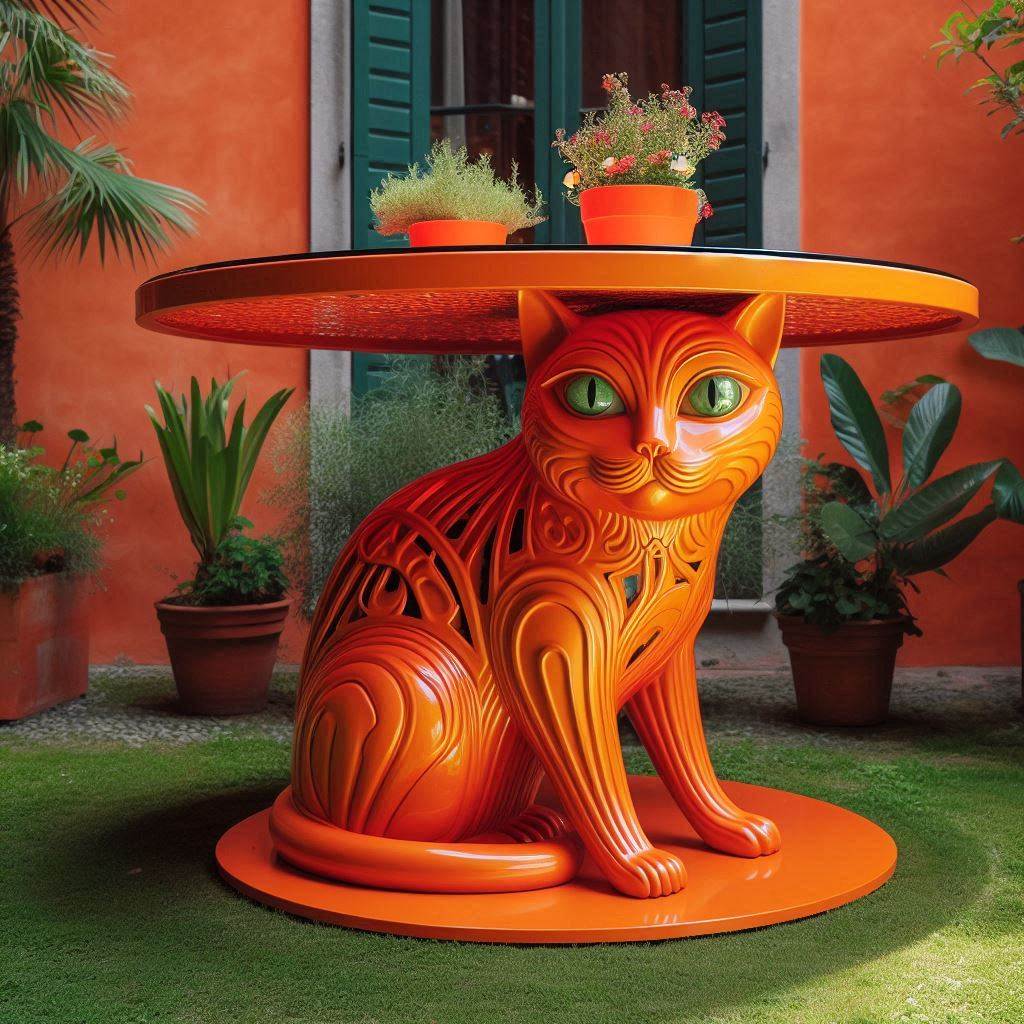
Thickness plays an important role in durability and aesthetic appeal. Thicker tabletops provide sturdiness and can support more weight. For example, a 1-inch thick tabletop works well for everyday use.
Thinner designs offer a sleek look that aligns with modern decor trends. A 0.5-inch thickness can create an airy feel while still being functional. Choosing the right thickness depends on how the table will be used.
Impact on Aesthetic
Color and material choices significantly affect the overall aesthetic of cat-shaped tables. A pastel-colored wooden table adds charm to a child’s room or a cozy reading nook. In contrast, a bold metal design suits contemporary spaces.
The combination of color and material can enhance or detract from the desired atmosphere. For instance, pairing bright hues with sleek metal creates an energetic vibe. Meanwhile, soft colors with textured wood evoke calmness.
Key Factors to Consider
- Personal Style: Choose colors and materials that reflect your taste.
- Room Decor: Match the table with existing furniture for harmony.
- Functionality: Consider how you will use the table when selecting materials.
Enhancing Outdoor Aesthetics
Garden Integration
Cat-shaped tables can easily fit into garden settings. Placing them among flowers and greenery adds a whimsical touch. Choose materials like pine or red oak for durability. These woods withstand outdoor conditions well.
Local lumber yards often carry these types of wood. They provide options for custom sizes and designs. Using whitewood common board is another choice for a lighter look. This wood is affordable and easy to paint, allowing for personal expression.
Playful Atmosphere
These tables create a playful atmosphere in any outdoor space. Their unique shape draws attention and sparks joy. Guests will notice the creativity right away.
Imagine children laughing as they play around the table. Adults can enjoy tea or coffee while admiring the design. The cat shape encourages fun interactions, making gatherings more enjoyable.
Conversation Starters
Cat-shaped tables serve as excellent conversation starters. Their quirky design invites questions and comments from guests. People often share stories about their own pets or favorite animals.
At social gatherings, these tables can break the ice. Guests may gather around them, sharing laughter and memories. This interaction fosters connections among friends and family.

Versatile Uses
These tables are not just decorative; they are functional too. Use them for serving snacks or drinks during parties. They can also hold potted plants, adding more life to the space.
Consider placing one near a seating area for convenience. This setup allows easy access to refreshments while enjoying the outdoors.
Customization Options
Customization adds another layer of charm to cat-shaped tables. Painting them bright colors can make them stand out even more. For example, a sunny yellow or soft pastel shade can brighten up any patio.
Adding cushions or blankets enhances comfort during gatherings. Choose fabrics that match your outdoor decor for a cohesive look.
DIY Assembly Guide
Benefits of DIY
Building your own cat-shaped table offers many advantages. First, you can customize the design to fit your space. This means choosing the size and color that matches your home decor. Second, creating it yourself is often cheaper than buying a pre-made one. Using cheap particle board keeps costs low while still providing durability. Finally, this project allows you to express your creativity. You can add personal touches that reflect your style.
Overview of Assembly Process
The assembly process for a cat-shaped table is straightforward. Start by gathering all necessary materials. You will need support boards, screws, and tools like a saw and screwdriver. Next, sketch a simple plan for the table’s shape and dimensions. Cut the particle board according to your plan.
Once you have all pieces ready, begin assembling them. Attach the legs securely to ensure stability. Use clamps if needed to hold pieces together while screwing them in place. After assembly, sand down any rough edges for safety and aesthetics. Finally, paint or finish the table as desired.
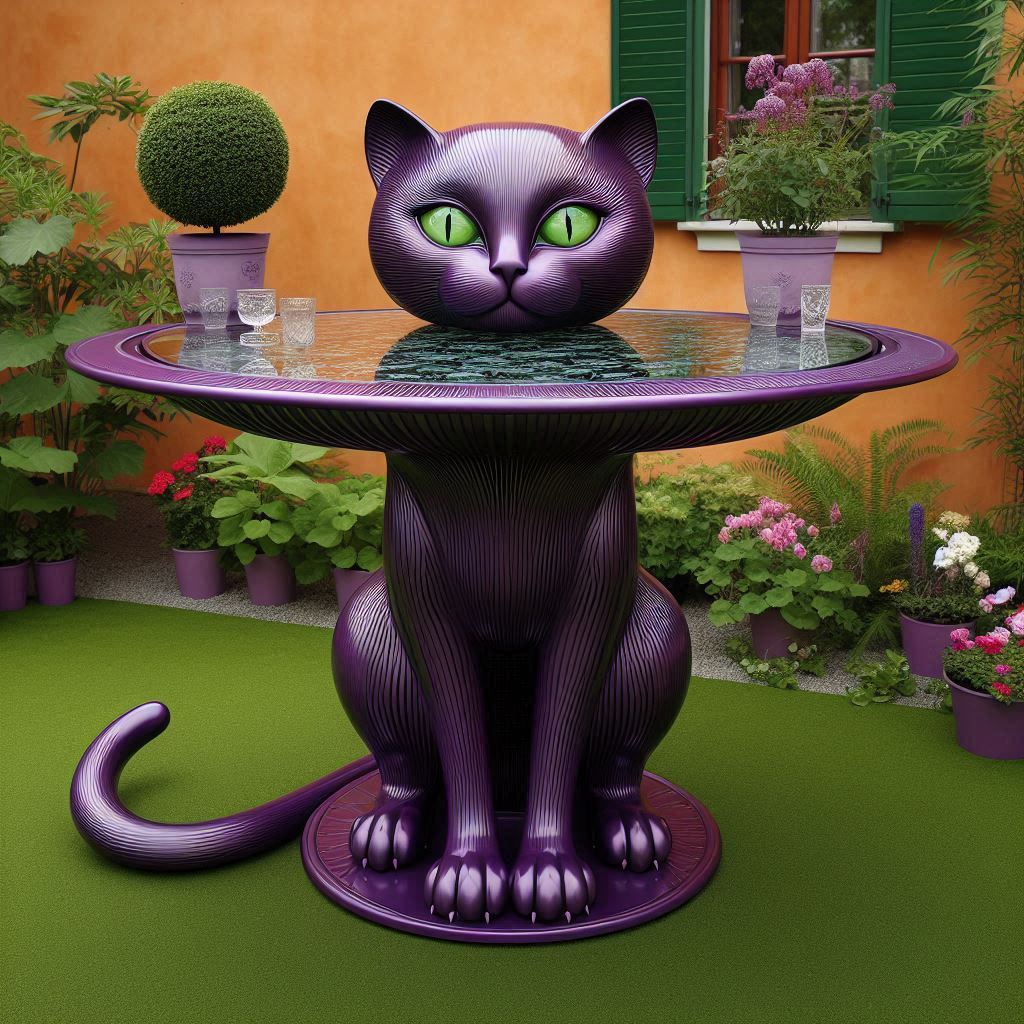
Common Pitfalls to Avoid
Many beginners face challenges during assembly. One common mistake is not measuring properly before cutting the wood. Always double-check measurements to avoid wasting materials. Another issue is neglecting to secure joints tightly. Loose connections can lead to wobbling or even collapse.
Ensure you choose the right type of screws for your support boards. Using incorrect screws can weaken the structure. Lastly, remember to take breaks if you feel frustrated. Rushing can lead to careless mistakes.
Essential Tools and Materials
Necessary Tools
Building a cat-shaped table requires specific tools. A saw is essential for cutting wood to the right sizes. Choose a circular saw or a jigsaw for more intricate cuts. A drill is also necessary for creating holes and securing fasteners. It helps in assembling the pieces tightly.
A measuring tape is vital for precise measurements. Marking tools, like a pencil or chalk, help outline where cuts will be made. Sanding tools are important as well. They smooth rough edges and ensure safety.
Required Materials
Selecting the right materials is crucial for durability. Use long boards for the tabletop and short boards for the legs. Plywood can be an excellent choice for the main structure. It is sturdy yet lightweight.
Consider using hardwood for better quality and longevity. Oak or maple can provide a beautiful finish. Fasteners like screws and wood glue are needed to hold everything together firmly.
Buying materials from a local lumberyard ensures you get quality wood. Check if they offer different types of wood, as this gives you options based on your design preferences.
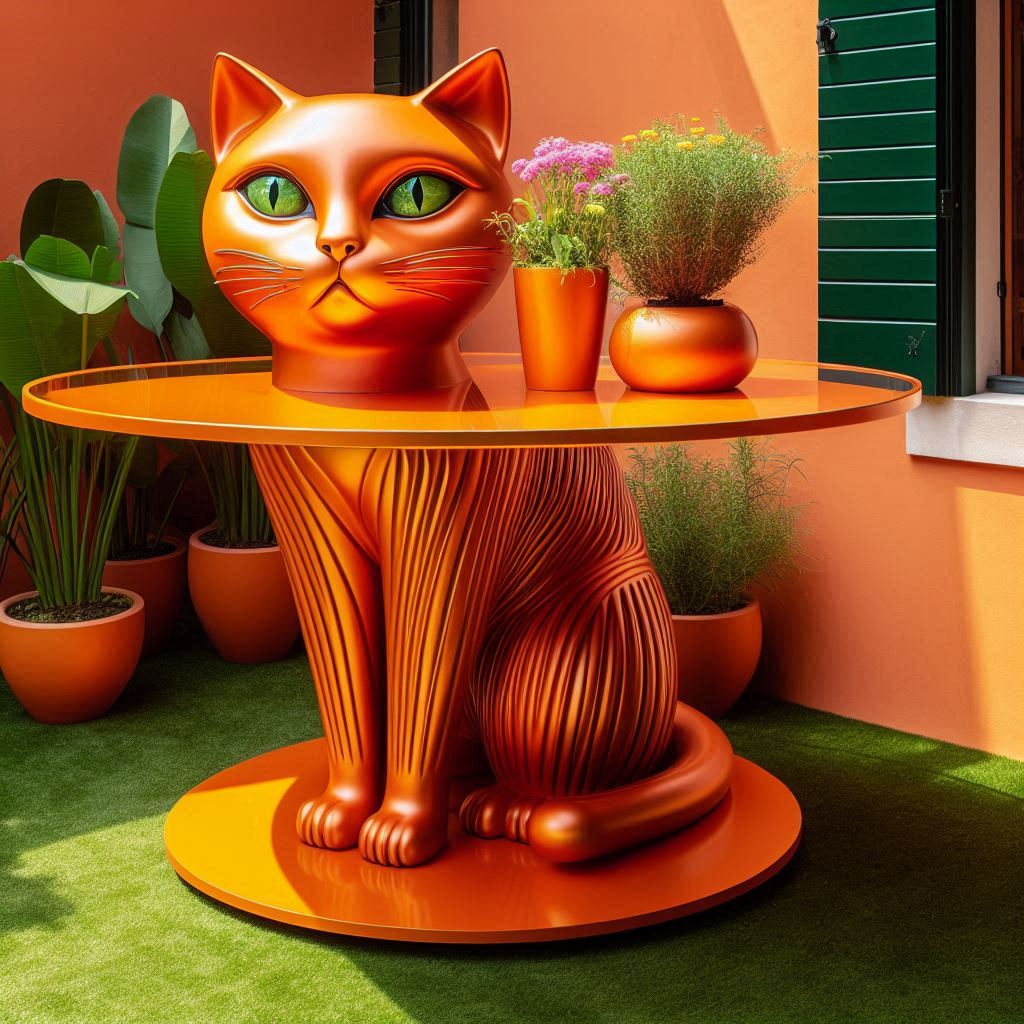
Importance of Quality Tools
Using high-quality tools makes a significant difference in any DIY project. Quality tools last longer and perform better. They reduce frustration during assembly and lead to cleaner cuts.
Investing in good equipment saves time and effort. Poor-quality tools can break easily, leading to delays in your project. For example, a dull saw blade can cause jagged edges, which require extra sanding.
Proper tools also enhance safety while working. Using a reliable drill decreases the risk of accidents. Safety should always come first when handling sharp instruments.
Step-by-Step Construction Instructions
Gather Materials
Start by collecting all necessary materials. You will need several boards for the tabletop and legs. Use a short board for the tail and two larger boards for the body. Make sure to have screws ready for assembly.
Measure each board carefully before cutting. Accuracy is key in this project. A measuring tape helps ensure that your dimensions are correct. Mark your cuts clearly with a pencil.
Cut the Boards
Use a saw to cut the boards according to your measurements. Ensure you wear safety goggles during this process. Cutting can be dangerous, so keep your fingers away from the blade.
Make straight cuts for cleaner edges. If you struggle with straight lines, use a guide or clamp a straight edge to your board. This will help you achieve better results.
Assemble the Base
Begin assembling the base of the cat-shaped table. Attach the legs to the bottom of the larger boards using screws. Pre-drill holes to avoid splitting the wood.
Position each leg at an angle if you want a more dynamic look. This will also add stability to your table. Secure each leg tightly with screws.
Create the Top
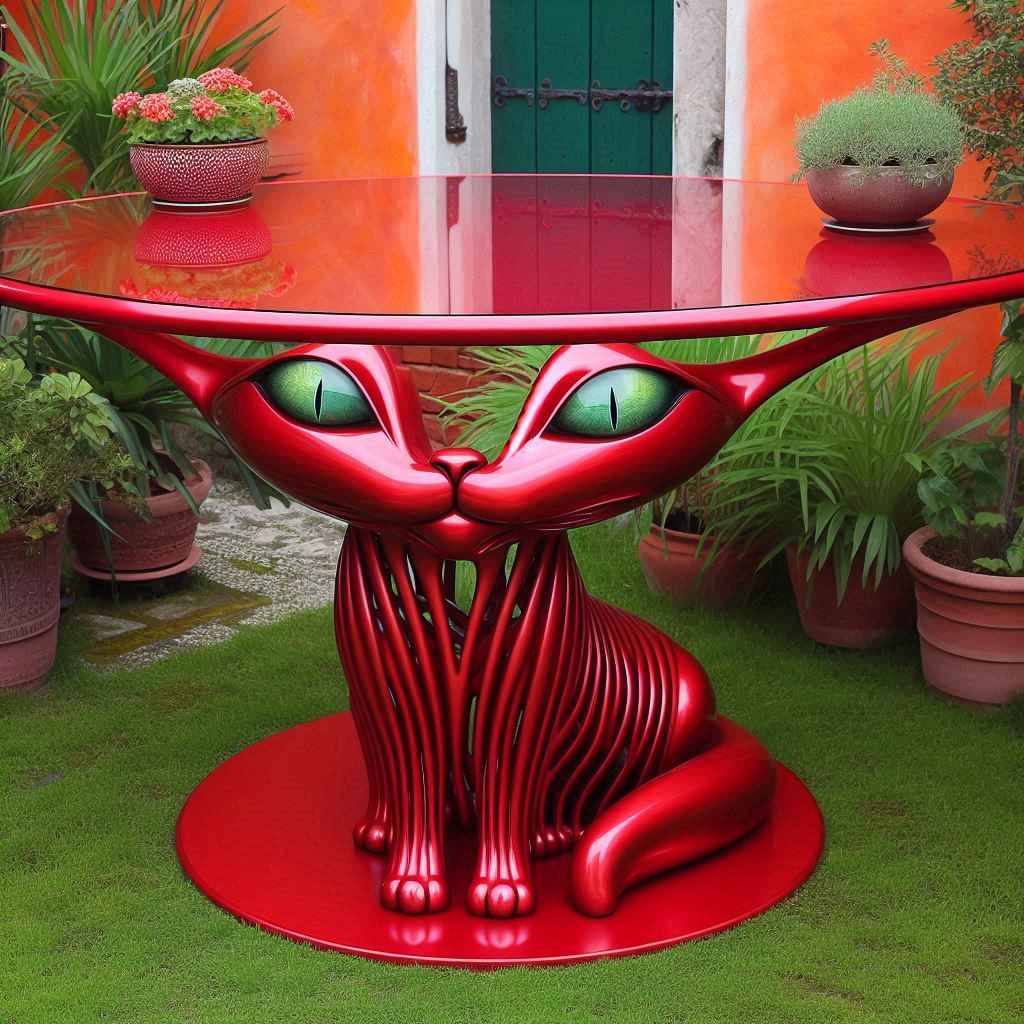
Next, focus on constructing the top of the table. Take one of the larger boards and shape it into a cat’s head. Draw out your design first before cutting.
Cut out ears and other features carefully. Use a jigsaw for curves and intricate shapes. Smooth out any rough edges with sandpaper after cutting.
Attach Top to Base
Once you finish shaping the top, attach it to the base. Align it properly so that it fits snugly on top of the legs. Use longer screws for this step, as they need to hold more weight.
Check that everything is level before tightening all screws completely. Adjust if necessary to ensure stability.
Finishing Touches
After assembly, consider adding finishing touches. Paint or stain your cat-shaped table to enhance its appearance. Choose colors that complement your space.
Let any paint or stain dry completely before using your new desk or table.
Safety Reminders
Always prioritize safety when working with tools and materials. Keep workspaces clean and organized to prevent accidents. Store tools safely when not in use.
If you are inexperienced with power tools, ask for help from someone who is skilled.
Techniques for Sanding and Staining
Importance of Sanding
Sanding is crucial for achieving a smooth finish on your cat-shaped table. It removes imperfections from the wood surface. A smooth surface allows stains to penetrate evenly. Start with a coarse grit sandpaper to eliminate rough spots. Progressively move to finer grits for a polished look. Using 120-grit followed by 220-grit sandpaper works well for soft wood like pine or fir.
Ensure you sand in the direction of the grain. This minimizes scratches that can show through the stain. Pay attention to corners and edges, as they often need more care. After sanding, clean the surface thoroughly to remove dust. A clean surface ensures better adhesion of stains.
Staining Techniques
Different staining techniques can enhance the wood’s natural beauty. One popular method is using a rag to apply stain. This technique allows for greater control over how much stain gets absorbed into the wood boards. Another option is brushing on the stain with a high-quality brush. This method works well for larger areas.
Herringbone patterns can also be stained uniquely. Use contrasting colors to highlight the design. For instance, lighter stains can make white oak pop, while darker tones add depth. Always test your stain choice on a scrap piece first. This helps visualize how it will look on your project.
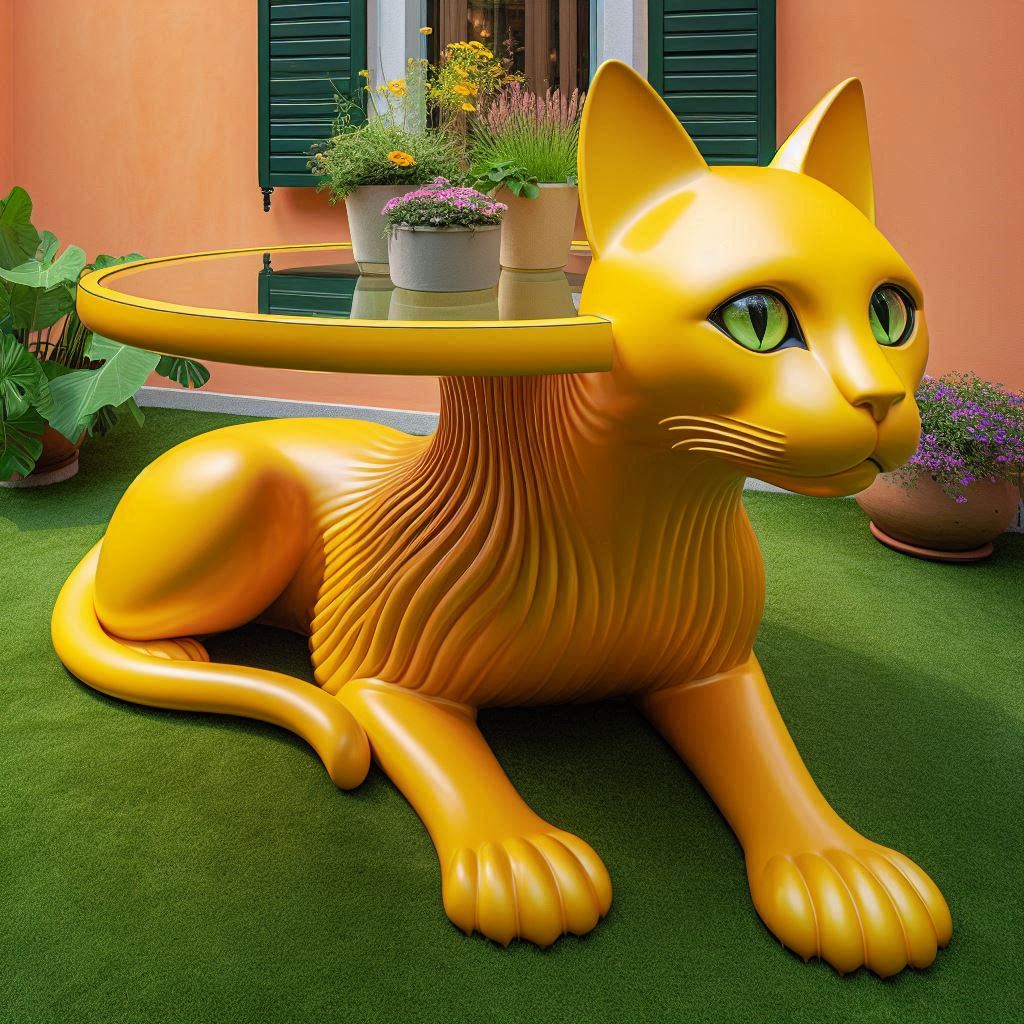
Best Practices for Applying Stains
Applying stains evenly requires some best practices. First, work in small sections to prevent overlaps and streaks. Use a foam brush or cloth for even application. Apply the stain generously but wipe off any excess after a few minutes.
Consider using General Finishes High Performance topcoat after staining. This product protects the wood and enhances its appearance. Allow the stain to dry completely before applying any finishes. Drying times vary based on humidity and temperature, so check labels for guidance.
When applying multiple coats, lightly sand between each coat with fine grit sandpaper. This step helps create a smoother finish and improves adhesion of subsequent layers.
Properly mixing your stain is also essential. Stir gently to avoid bubbles but ensure pigments are well combined. Bubbles can lead to uneven color distribution.
In summary, sanding prepares your table for staining by creating a smooth surface. Various staining techniques enhance its aesthetic appeal while following best practices ensures an even finish.
Decorating Your Whimsical Garden
Cat-themed Decor
Incorporating cat-themed decorations enhances the charm of your garden. Use playful items like cat-shaped planters or whimsical figurines. These can add a fun touch to your outdoor space.
Consider mixing different materials. A ceramic cat statue pairs well with a wooden cat bench. This combination creates a cohesive look.
You might also want to add wall art. Hang cat-themed signs or paintings on nearby fences. This adds personality and draws attention to your garden design.
Plants and Flowers
Selecting the right plants is key for your garden’s aesthetic. Choose flowers that complement the playful design of the cat-shaped table. Bright colors work well, such as yellow marigolds or purple petunias.
Succulents are also a great option. They require little maintenance and come in various shapes. Their unique forms can mirror the whimsical nature of your decor.
Herbs like lavender or mint can add fragrance while being useful for cooking. Plant them around the table for easy access during meals.
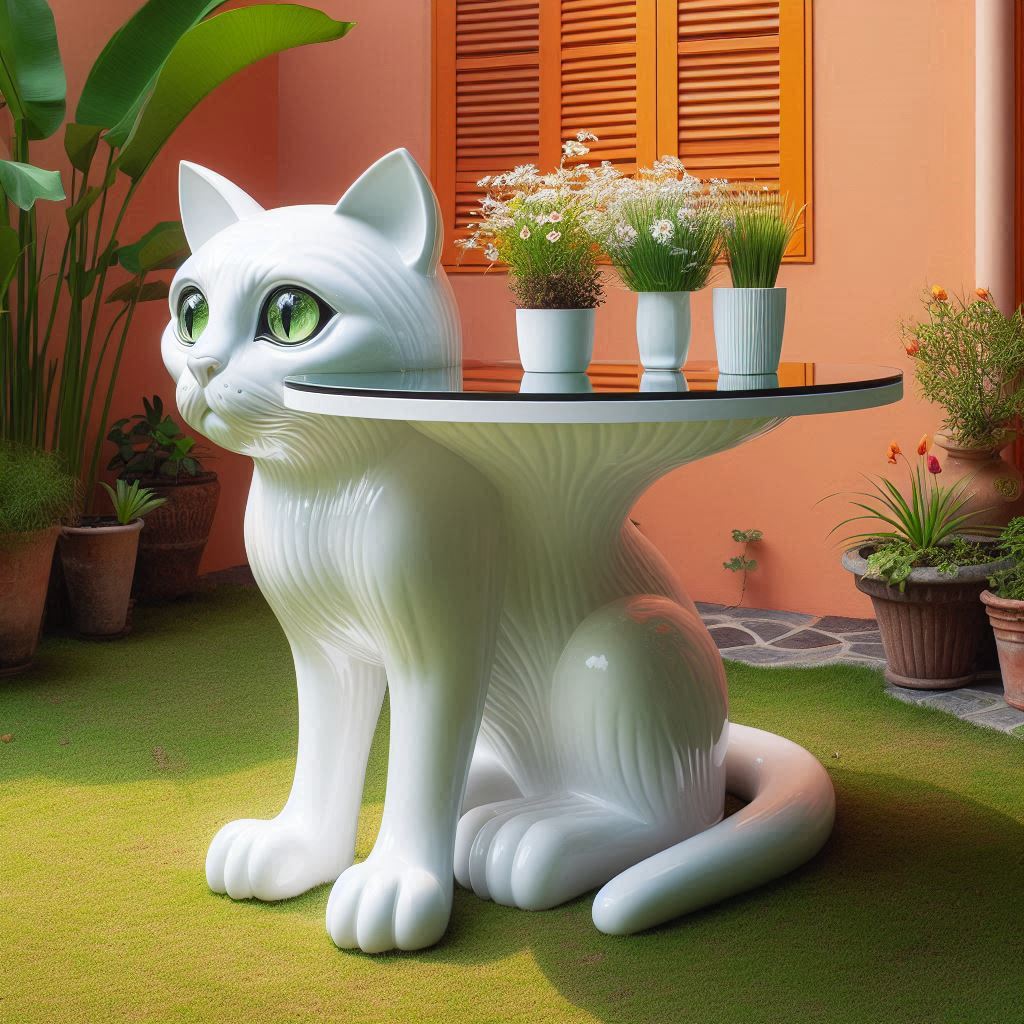
Magical Lighting
Lighting transforms any outdoor space into a magical retreat. String lights can create a cozy atmosphere around your cat-shaped table. Hang them from trees or along fences for an enchanting effect.
Consider using solar-powered lanterns on the ground or hanging from branches. They provide soft light without needing electrical outlets.
Candles in decorative holders can also enhance the ambiance. Place them safely on the table for an intimate dining experience.
Seasonal Changes
Changing decorations with the seasons keeps your garden fresh. In spring, use pastel colors and blooming flowers. Add bunny decorations for Easter.
During summer, focus on vibrant colors and tropical plants. Incorporate beach-themed items like seashells or starfish.
Fall brings opportunities for warm hues and harvest decorations. Use pumpkins and gourds to celebrate the season.
Winter can be magical with twinkling lights and evergreen plants. Add snowflake ornaments or holiday-themed decor to keep it festive.
Maintenance Tips
Regular maintenance ensures your whimsical garden stays beautiful. Water plants consistently, especially during dry spells. Prune dead leaves to encourage growth.
Clean decorations regularly to keep them looking fresh. Use mild soap and water to avoid damage.
Check lighting fixtures periodically to ensure they work well. Replace bulbs as needed for consistent brightness.
Playful Decoration Tips
Fun Accessories
Cushions add comfort and color. Choose cushions with cat patterns or playful designs. They can brighten up your space and make it more inviting. Cat figurines also enhance the charm of a cat-shaped table. Look for unique pieces that reflect your personality.
These accessories can create a cozy atmosphere. Consider using soft textures and vibrant colors. They help to create a theme around your table. This adds to the overall decor of your home.
Seasonal Touches
Seasonal decorations keep the look fresh. For spring, use pastel colors and floral arrangements. In summer, bright colors and beach-themed items work well. Autumn brings rich tones like orange and brown. You can incorporate leaves or pumpkins for a cozy feel.
In winter, snowflakes or holiday ornaments can add magic. Change decorations with each season to maintain interest. This approach keeps your space lively and fun throughout the year.
Personalization Ideas
Personalizing the cat-shaped table makes it uniquely yours. Use items that tell your story or represent your interests. Pictures of pets or family can create a warm atmosphere. Handmade crafts also add a special touch.
Consider using different materials for variety. Wood, glass, or metal can mix well together. Unique finds from thrift stores or flea markets can stand out. Each item adds character to your decor.
Creativity plays a big role in decorating. Think outside the box when choosing items for your table. You might find joy in mixing styles or themes that reflect who you are.
Color Coordination
Color coordination enhances visual appeal. Stick to a color palette that complements the table’s design. Neutral tones often work well with vibrant accessories. This creates balance without overwhelming the space.
Experiment with contrasting colors for a bold statement. For example, pair bright cushions with darker table elements. This contrast draws attention and creates interest.
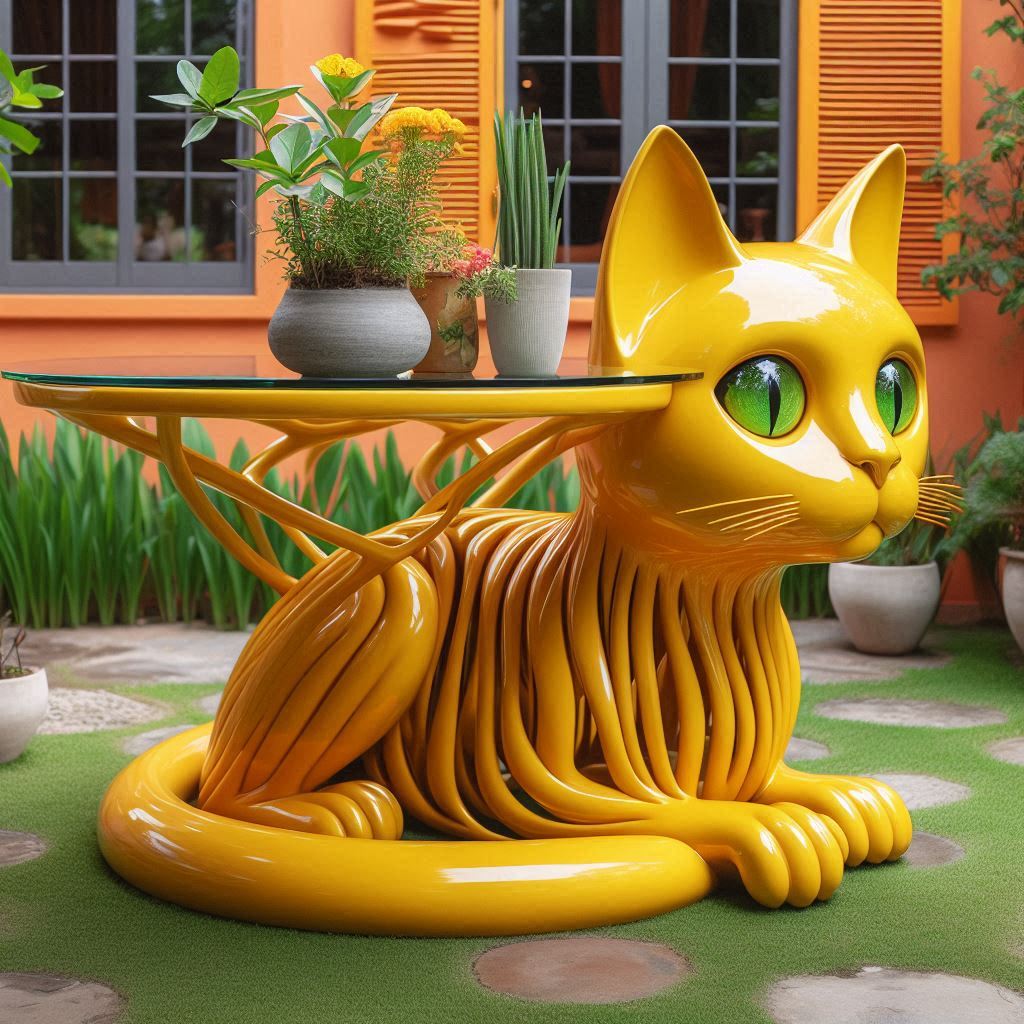
Functional Decor
Functional decor adds practicality to style. Use trays to organize small items like coasters or snacks. Decorative bowls can hold keys or other essentials while looking good.
This way, your cat-shaped table remains tidy and appealing. Functional items blend seamlessly into the decor while serving a purpose.
Functional and Stylish Setup
Arrangement Tips
Arranging a cat-shaped table can enhance any space. A well-organized setup maximizes both functionality and aesthetics. Place the table in a location that allows for easy access. Consider how the table fits with other furniture. Ensure there’s enough room to move around it comfortably.
In an office, position the desk near natural light. This promotes productivity and creates a pleasant atmosphere. If using it in a living room, consider adding decorative items on top. These can include plants or books to enhance its charm.
Storage Solutions
The multifunctional aspects of a cat-shaped table add value. Many designs include shelves, drawers, or cabinets. These features provide essential storage without sacrificing style. Use the drawers for office supplies or personal items. Shelves can hold decorative pieces or books.
For those on a budget, look for options that combine style and practicality. Some models offer nice hardwood finishes at reasonable prices. They maintain durability while fitting into various design themes.
Style Meets Practicality
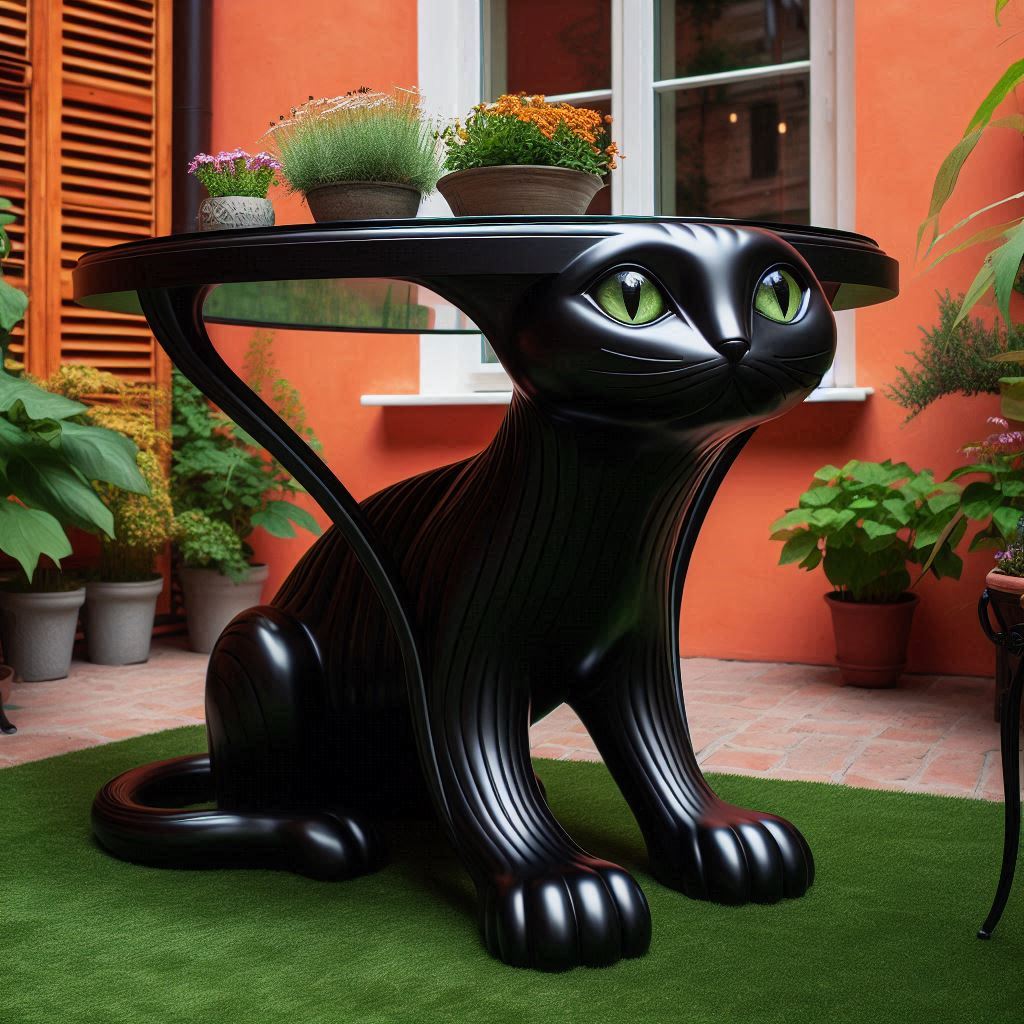
Balancing style and practicality is vital in any setup. A cat-shaped table can serve as both a statement piece and a functional desk. The unique shape draws attention while providing ample workspace.
Consider the materials used in construction. A gorgeous planed hardwood desk adds elegance to any area. It also complements various decor styles from modern to rustic. Select a finish that matches your existing furniture for cohesion.
When hosting guests, this table can double as a serving station. Set up snacks or drinks on the desktop for easy access during gatherings. Its distinctive design sparks conversation while being useful.
Budget-Friendly Options
Finding budget-friendly options is possible without compromising quality. Look for tables made from good-quality materials that don’t break the bank. Several brands offer beautiful designs at a fraction of the cost of high-end models.
Research online reviews to find reliable products within your budget range. Many users share their opinions on durability and functionality, which helps in making informed decisions.
Closing Thoughts
Creating a cat-shaped table is not just about design; it’s about adding a playful touch to your space. You’ve explored unique styles, color choices, and even DIY techniques. These elements come together to make a statement that reflects your personality and love for feline friends. Whether indoors or outdoors, these tables can elevate your decor while being functional.
Now it’s time to put your ideas into action. Gather your tools, unleash your creativity, and start building! Don’t forget to share your finished project with friends or on social media. Your whimsical cat-shaped table could inspire others to add some fun to their homes too. Happy crafting!










